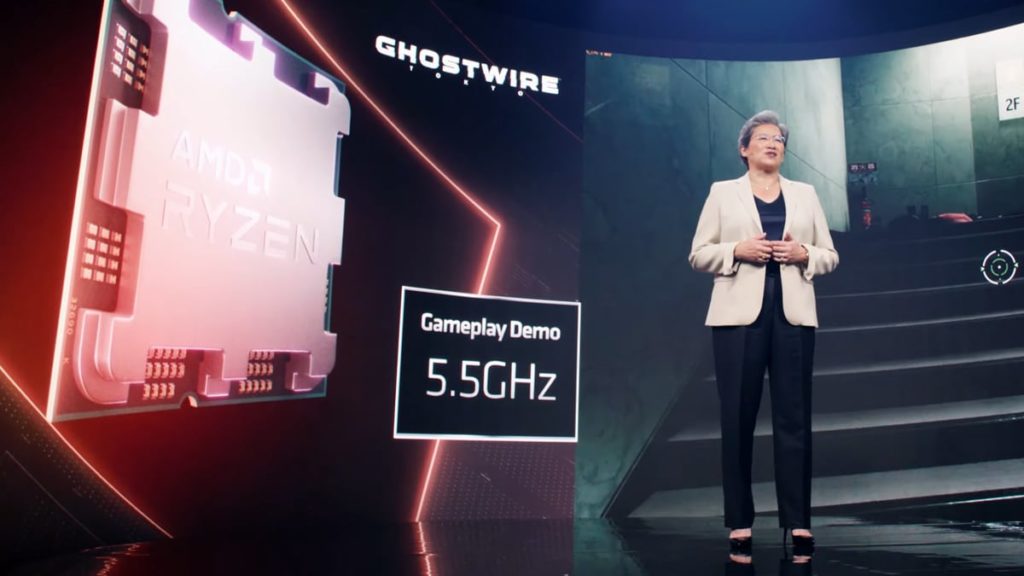
One of the more exciting segments of AMD’s Computex 2022 Keynote was the portion where AMD Chair and CEO Dr. Lisa Su brought out a demo of a mysterious Ryzen 7000 Series processor running Ghostwire: Tokyo at a very impressive clock of 5.5 GHz. Robert Hallock, Director of Technical Marketing at AMD, and Frank Azor, Chief Architect of Gaming Solutions, have now provided further insight regarding that presentation in a new interview with PC World’s The Full Nerd gang, revealing the interesting detail that the CPU was actually running at stock settings and without any sort of overclock. The obvious implication here is that owners of what is presumably AMD’s flagship Zen 4-based desktop processor will be able to experience amazing speed and performance right out of the box without serious tweaking. A majority of the CPU threads were reportedly able to maintain 5.5 GHz while running Tango Gameworks’ supernatural first-person adventure.
AMD's Robert Hallock on the 5.5 GHz Demo in @PCWorld stream:
— 𝐷𝑟. 𝐼𝑎𝑛 𝐶𝑢𝑡𝑟𝑒𝑠𝑠 (@IanCutress) May 24, 2022
▶ AMD Reference Mobo
▶ 280mm AIO cooler
▶ 16 core prototype from April
▶ Plugged in, no OC
Natural freq of that CPU
▶ Most threads around 5.5, depends on scene/game
▶ 5.2-5.5 on all threads was common on the game
It is not an overclock part. It’s just that’s the natural frequency of that particular prototype, so in the game we were running most of the threads around 5.5. That depends on the game load, depends on the scene. Of course clocks need to fluctuate up and down, so somewhere between 5.2 and 5.5 was pretty common on all the threads playing that game.
Source: PC World
